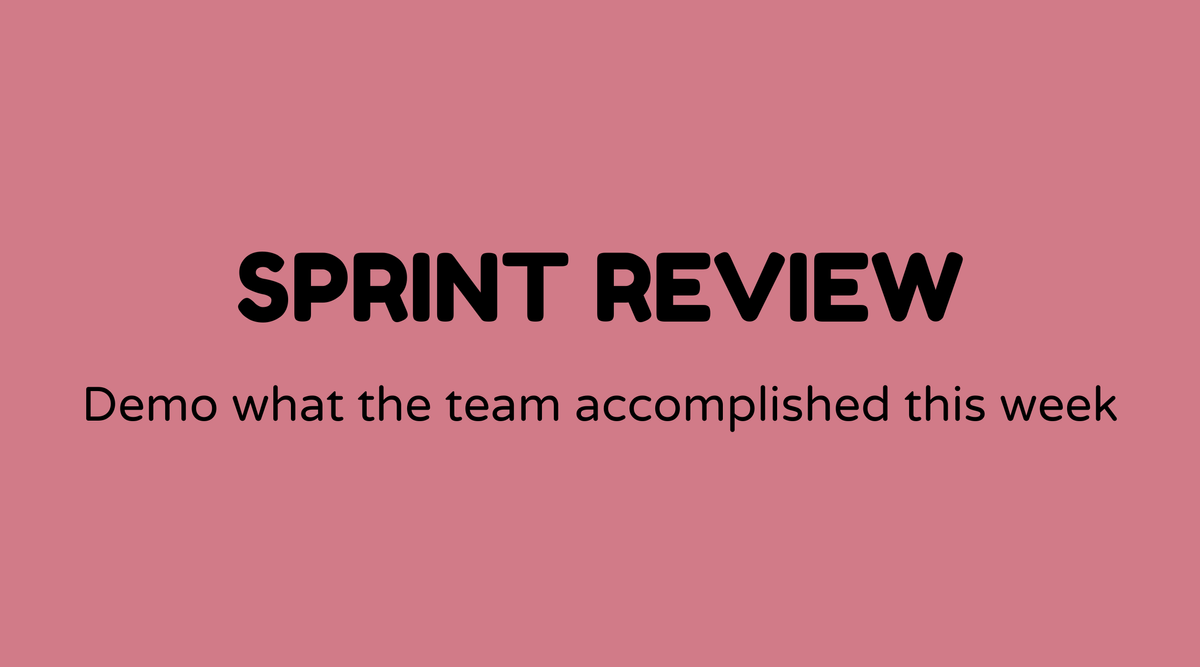Sprint review

Overview of Sprint Review
The sprint review serves as a concluding assessment at the end of a project sprint where the entire team gathers to evaluate accomplishments. This gathering is an essential aspect of the agile process, ensuring that both the team and stakeholders have a mutual understanding of progress and a clear focus moving into the next sprint.
Think of it like baking a cake; just before cutting into it, everyone comes together to check whether it looks good, tastes delightful, and meets everyone's expectations. That encapsulates a sprint review within product development.
Importance of Sprint Review
A sprint review is vital because it aligns all participants, facilitating real-time feedback. When teams come together to discuss successes, challenges, and areas for enhancement, it promotes ongoing improvement and ensures alignment.
This gathering also fosters transparency with stakeholders. They can view concrete progress instead of just receiving verbal updates. It's a moment for open feedback to adjust features and ensure the product aligns with expectations, which helps avert unexpected issues and directs the project appropriately.
Definition of Sprint Review
The sprint review is a meeting at the conclusion of a sprint where the team presents the finished work to stakeholders and colleagues. It generally includes a demonstration of the product increment, offering everyone a chance to provide input.
In simpler terms, it’s a relaxed presentation. However, it’s not solely about showcasing; it’s also a time for learning and adapting. The review allows discussion of completed tasks, challenges encountered, and adjustments needed for future work.
Conducting a Sprint Review
Holding a sprint review isn’t merely about stating "Look, we accomplished things, now applaud!" Instead, it follows a structured format while encouraging open dialogue.
- Invite Stakeholders: The product owner usually invites stakeholders to participate in the review.
- Team Presentation: The team demonstrates what has been achieved, showcasing the product increment and emphasizing key features.
- Feedback Session: Stakeholders and team members share their thoughts on the product, offering suggestions for improvements.
- Backlog Review: Discuss any new items for the backlog and modify it as necessary.
- Wrap-Up: Conclude by summarizing the next steps and considering the feedback for the upcoming sprint.
Sample Agenda for Sprint Review
- Introduction and Purpose: Clarify the objectives of the review.
- Showcase of Completed Work: Present the finished product increments.
- Feedback Discussion: Open the floor for input from stakeholders and team members.
- Backlog Review: Examine and discuss the backlog and any necessary updates.
- Conclusion and Next Steps: Summarize discussions, address feedback, and outline future actions.
Examples of Sprint Review
-
Success Story: A software development team presenting a new app feature received immediate feedback, resulting in a small adjustment that greatly enhanced user experience.
-
Learning Opportunity: A negative reaction during a sprint review led a marketing team to alter their campaign strategy, which ultimately led to a more effective launch.
-
Ongoing Improvement: By regularly conducting sprint reviews, a company was able to continuously refine their product to better match customer needs, even inspiring the launch of a new product line.
FAQs
How long should a sprint review last?
Sprint reviews typically last about 1-3 hours, depending on the duration of the sprint and the complexity of the completed tasks.
Who attends a sprint review?
The whole Scrum team, including the Scrum Master, Product Owner, development team, and any relevant stakeholders or clients, should be present.
What distinguishes a sprint review from a sprint retrospective?
While both meetings occur at the end of a sprint, the sprint review focuses on the product and its outcomes, while the retrospective emphasizes the process and team dynamics.
Is it necessary to demo the product during a sprint review?
Yes, a demonstration is an essential component of a sprint review as it allows stakeholders to see the concrete results of the sprint and give feedback.
Can a sprint review be conducted online?
Absolutely! Distributed teams frequently hold sprint reviews through video conferencing platforms, allowing all participants and stakeholders to join, regardless of location.
What is the role of the Product Owner in a sprint review?
The Product Owner plays an essential role by outlining the achievements against objectives and facilitating discussions regarding changes to the product backlog.



